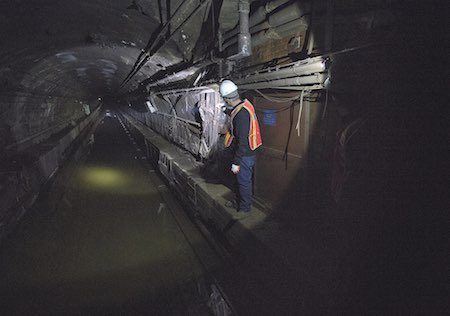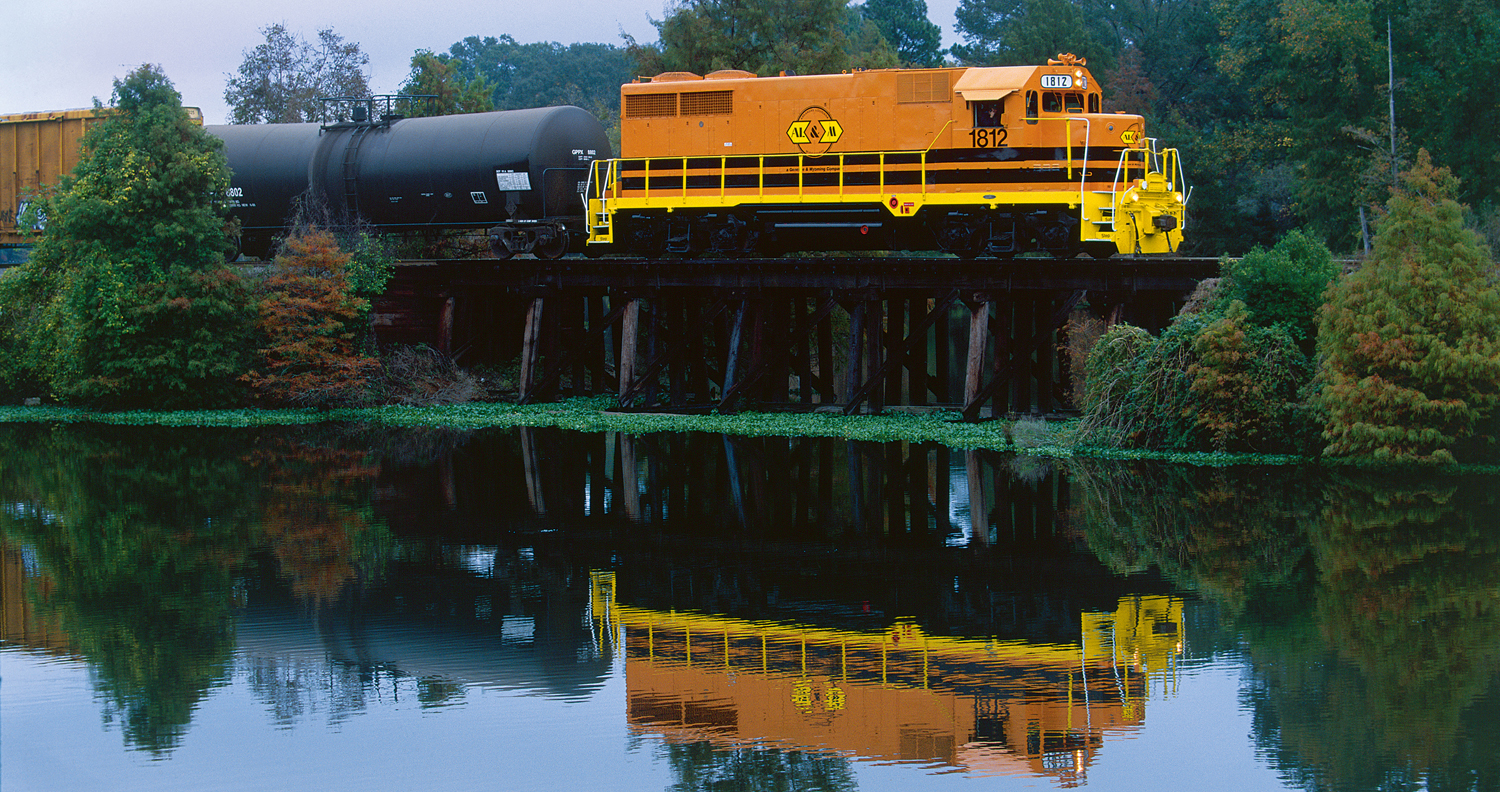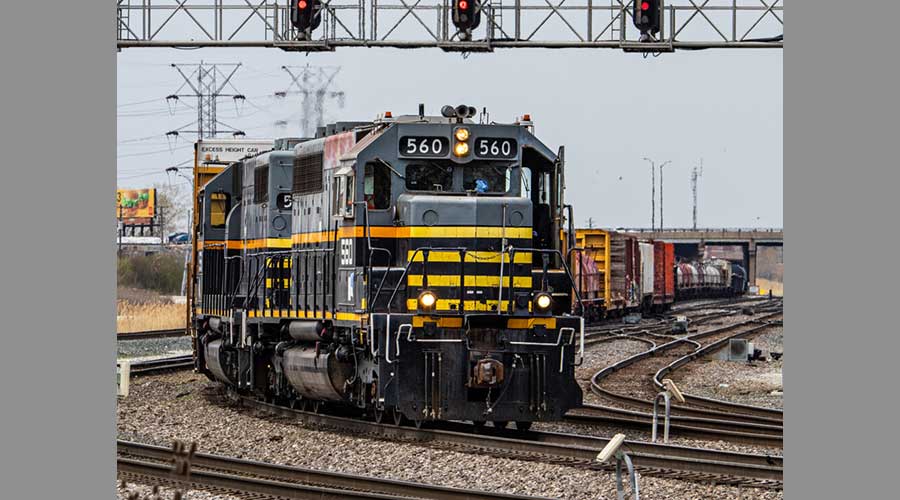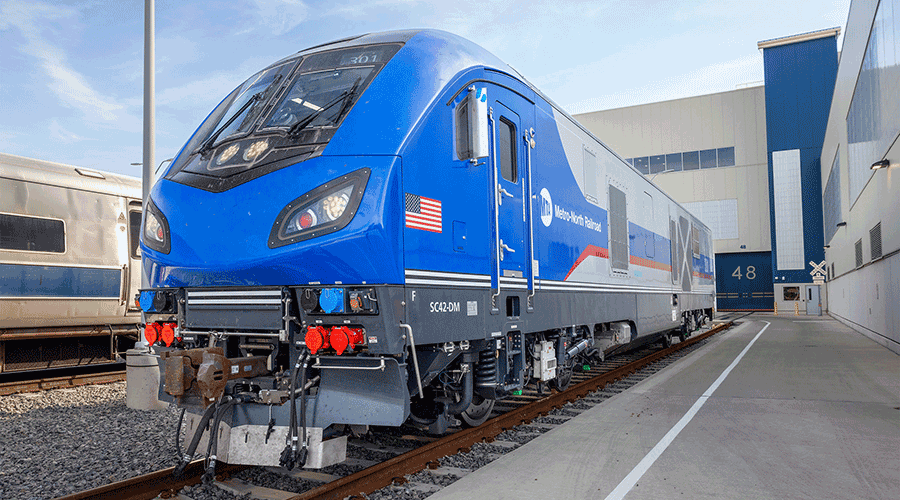Stay updated on news, articles and information for the rail industry
7/26/2016
Rail News: Maintenance Of Way
New York City Transit to close L line subway tunnel for 18 months
MTA New York City Transit (NYCT) will close its Canarsie Tunnel under the East River for 18 months to repair Hurricane Sandy-related damage. The closure is slated to begin "no sooner than 2019," the agency announced yesterday.
The decision to move forward with a full year-and-a-half tunnel closure instead of a one-track, three-year closure was made based on "detailed operational review," NYCT officials said in a press release. The agency also held four large-scale community meetings to gather public input on the closure options.
 The MTA's decision to close the Canarsie tubes for 18 months was based on a 'detailed operational review,' according to the agency.
The MTA's decision to close the Canarsie tubes for 18 months was based on a 'detailed operational review,' according to the agency.Photo: MTA
The tunnel carries NYCT's L line trains between Brooklyn and Manhattan and was badly damaged during the 2012 storm that ravaged the East Coast. About 225,000 riders use the line to travel between the boroughs each weekday.
"While the MTA always looks to avoid service disruptions, there is no question that repairs to the Canarsie Tunnel are critical and cannot be avoided or delayed," said MTA Chairman and Chief Executive Officer Thomas Prendergast in the release. "Throughout this process we have committed to engaging the community and listening to all concerns so that we can address them as we prepare for this necessary work."
As part of its community outreach, MTA officials visited all 11 community boards along the L Line, which were "overwhelmingly in favor of the full, shorter-duration closure," according to the agency. Of the comments MTA received directly through email, social media and at meetings, 77 percent were in favor of the full closure.
About 80 percent of riders would experience the same disruptions with either option, added NYCT President Veronique Hakim, noting that the shorter work period allows the agency to offer contractor incentives to finish the work as fast as possible.
"We think it is better to have a shorter duration of pain than a longer more unstable process – and risk unplanned closures – by leaving one track open during construction," said Hakim.
The Canarsie Tunnel was one of nine underwater tunnels that flooded during Hurricane Sandy. All tunnels required major rehabilitation and repair. Some of that work was completed during night and weekend closures.
However, MTA previously closed the R line's Montague Tunnel under the East River for 13 months and the G line tunnel under Newton Creek for two months to complete the renovations.
The Canarsie Tunnel suffered extensive damage to track, signals, switches, power cables, signal cables, communication cables, lighting, cable ducts and bench walls throughout a 7-mile segment of both sides of the tunnel. Bench walls throughout those sections must be replaced to protect the structural integrity of the two tubes that carry trains through the tunnel, MTA officials said.
 In 2012, Hurricane Sandy flooded the Canarsie Tunnel with 7 million gallons of saltwater.
In 2012, Hurricane Sandy flooded the Canarsie Tunnel with 7 million gallons of saltwater.Photo: MTA / Patrick Cashin
During the rehabilitation process, the agency also will make improvements to stations and tunnel segments closest to the under-river section. New stairs and elevators will be installed at the Bedford Avenue station in Brooklyn and the First Avenue station in Manhattan.
In addition, three new electric substations will be installed to provide more power to operate additional trains during rush hours.
The agency must advance the procurement of design and construction services for the project to ensure federal funding, according to MTA.
The agency is developing alternative service plans and will continue to work with community, city and state agencies and other stakeholders to minimize impacts of the closure with added service, including more capacity on the M, J and G trains.
In the meantime, NYCT will continue inspecting the Canarsie Tunnel to ensure it remains reliable until permanent repairs can be performed, MTA officials said.
Contact Progressive Railroading editorial staff.


 2025 MOW Spending Report: Passenger-rail programs
2025 MOW Spending Report: Passenger-rail programs
 Gardner steps down as Amtrak CEO
Gardner steps down as Amtrak CEO
 Guest comment: Oliver Wyman’s David Hunt
Guest comment: Oliver Wyman’s David Hunt
 Women of Influence in Rail eBook
Women of Influence in Rail eBook
 railPrime
railPrime








